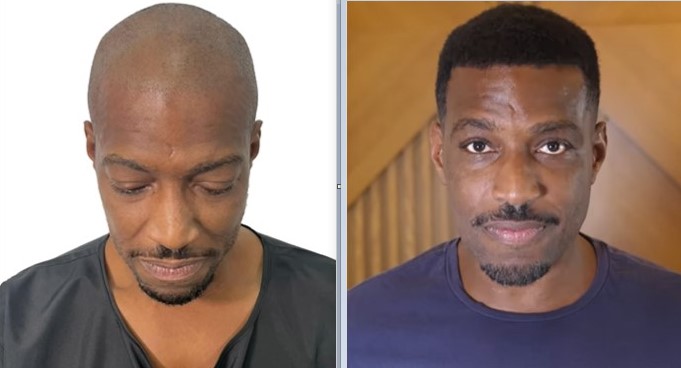Hair loss related to alopecia is a distressing type of hair loss for both women and men. The early warning signs of alopecia areata typically start with hair falling out, then progress to small bald patches on the scalp.
Diagnosing an alopecia condition is not difficult, as it has recognizable symptoms — the good news is alopecia can be treated and hair can be grown back.
Understanding what alopecia is can help you get on the right path to treat this type of hair loss for men and women.
What is Alopecia?
The alopecia condition is an autoimmune disorder that causes cells in your immune system to surround and attack your hair follicles, causing hair to fall out. With alopecia, sometimes your hair grows back, but then falls out again later. Alopecia areata can be unpredictable. To better understand your alopecia hair loss, we recommend you consult with an Este Medical Turkey hair loss expert to effectively manage this condition.
With alopecia areata, hair loss can occur suddenly, and often begins with one or more bald patches on the scalp that may overlap; this type of alopecia typically causes patchy hair loss. Recognizable alopecia symptoms include:
- Small circular bald patches on the scalp, or other parts of the body
- Bald spots that get larger or merge together
- Hair grows back in one bald spot, then falls out in another
- Loss of hair over a short period of time
- Increased loss of hair in cold weather
- Fingernails/ toenails become pitted, brittle and reddish
PRP microinjections combined with mesotherapy for hair loss is an ideal treatment for this type of alopecia. Contact Este Medical in Turkey to arrange a PRP mesotherapy hair treatment.
Types of Alopecia
There are different types of alopecia, and how to effectively treat alopecia does vary depending on the type of alopecia you are experiencing — a professional diagnosis is highly recommended.
Besides alopecia areata, other types of alopecia include:
Androgenic alopecia
Also known as male pattern baldness and female pattern hair loss. This type of alopecia condition tends to affect the top and front of the scalp. It is a hereditary condition that can be influenced by aging and hormone levels. People with pattern baldness often have close relatives with the same type of hair loss.
Two proven and effective hair loss treatments for alopecia, or pattern baldness, include laser hair regrowth therapy and FUE hair transplant in Turkey.
Traction alopecia
This type of alopecia hair loss is typically caused by repeated trauma to hair follicles, and from pulling hair into tight hairstyles that put undue tension on the roots. When hair is pulled from the roots to make a hairstyle it can cause long-term damage (e.g., hair extensions and hair glue, high ponytails, braids…) to the scalp and cause hair to break and fall out.
If hair loss is occurring around the hairline and temples, then a DHI hair transplantation may be the best way to replace hair damage from this type of alopecia — speak to an Este Turkey expert about this surgical alopecia treatment.
How Do You Get Alopecia?
Medical science is still mystified about what exactly causes alopecia. The general consensus is alopecia hair loss and alopecia hair trauma is linked to hereditary factors, hormones, and aging.
Alopecia risk factors may include: pernicious anemia, seasonal allergies, thyroid disease, and vitiligo (i.e., autoimmune disorder that causes patches of skin to lose color and pigment). If a related family member has alopecia you may be more likely to experience alopecia in your lifetime. If you suspect you have one of these alopecia causes, you should speak to a medical specialist (e.g., endocrinologist, dermatologist, hair loss expert).
Alopecia in men will most often be due to androgenic alopecia, or male pattern baldness. Professional treatment for this type of alopecia in males is strongly advised. Advances in hair loss therapy, technology, and surgery means retaining the hair you have, regrowing it, and replacing hair is possible.
Alopecia in women is most often associated with loss of hair along the hairline or a receding hairline. Changes in female hormones and traction alopecia play a big role in alopecia hair loss for women. In most cases, female hair loss clients do not like to shave or cut their hair for treatment; there are alopecia female treatments which avoid scalp shaving including a long hair transplant and a U-FUE unshaven hair transplant.
How To Treat Alopecia at Este Medical Group
Treatment for alopecia hair loss can vary from person to person, there are several effectively ways to treat alopecia, including:
- Mesotherapy and PRP
- Laser Hair Growth Therapy
- FUE Hair Transplant for Men
- FUE Hair Transplant for Women
- DHI Hair Transplant

Other hair loss treatments in Turkey for alopecia to consider are: robotic hair transplant, long hair transplant, unshaven hair transplant, and eyebrow transplant.
We recommend you send us a message and share your alopecia symptoms, alopecia concerns, and your hair loss treatment expectations.









.jpg)














